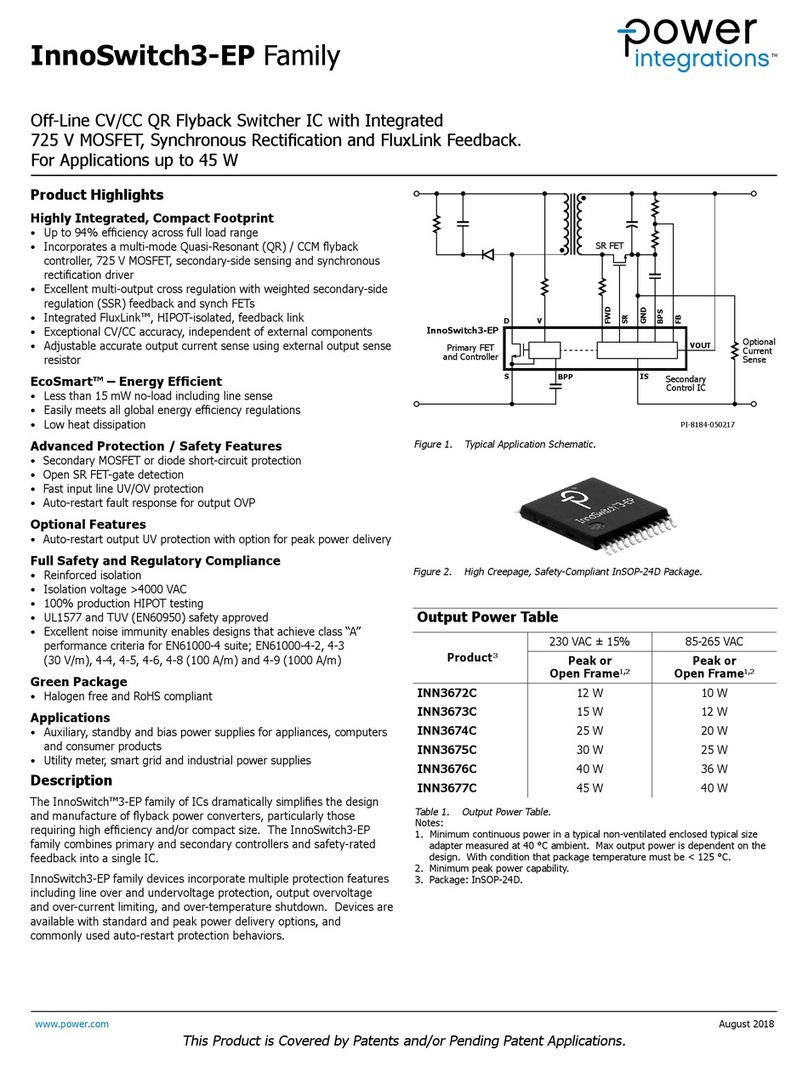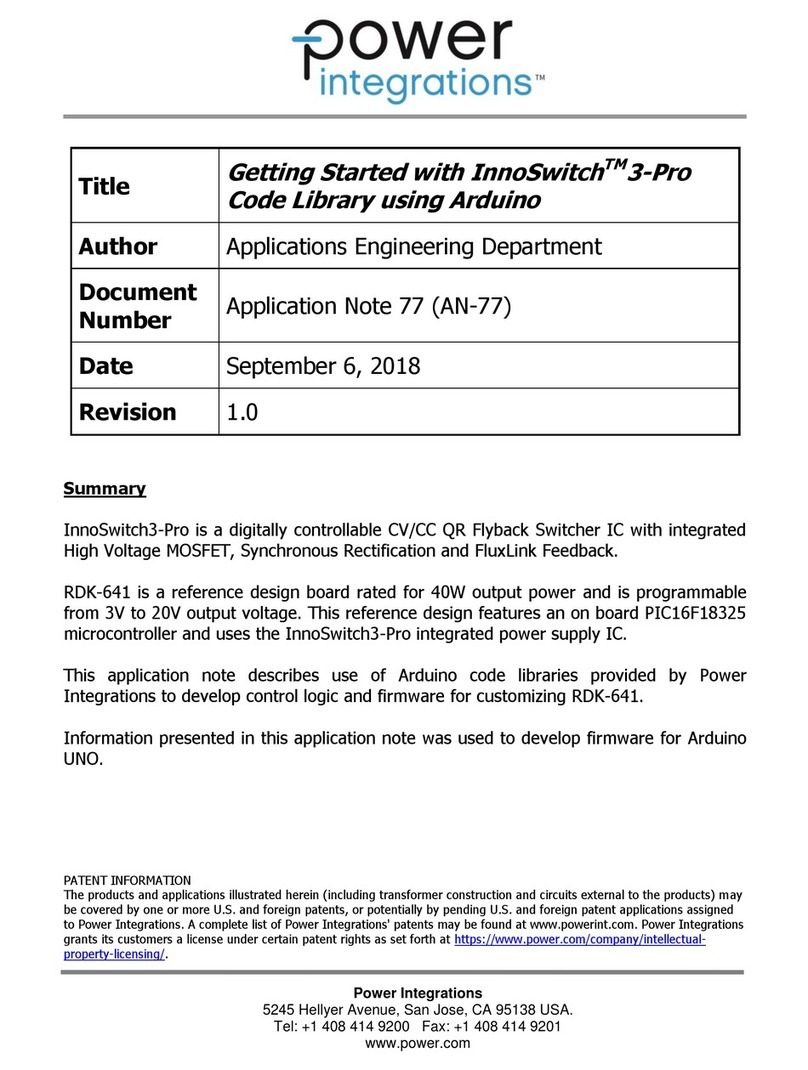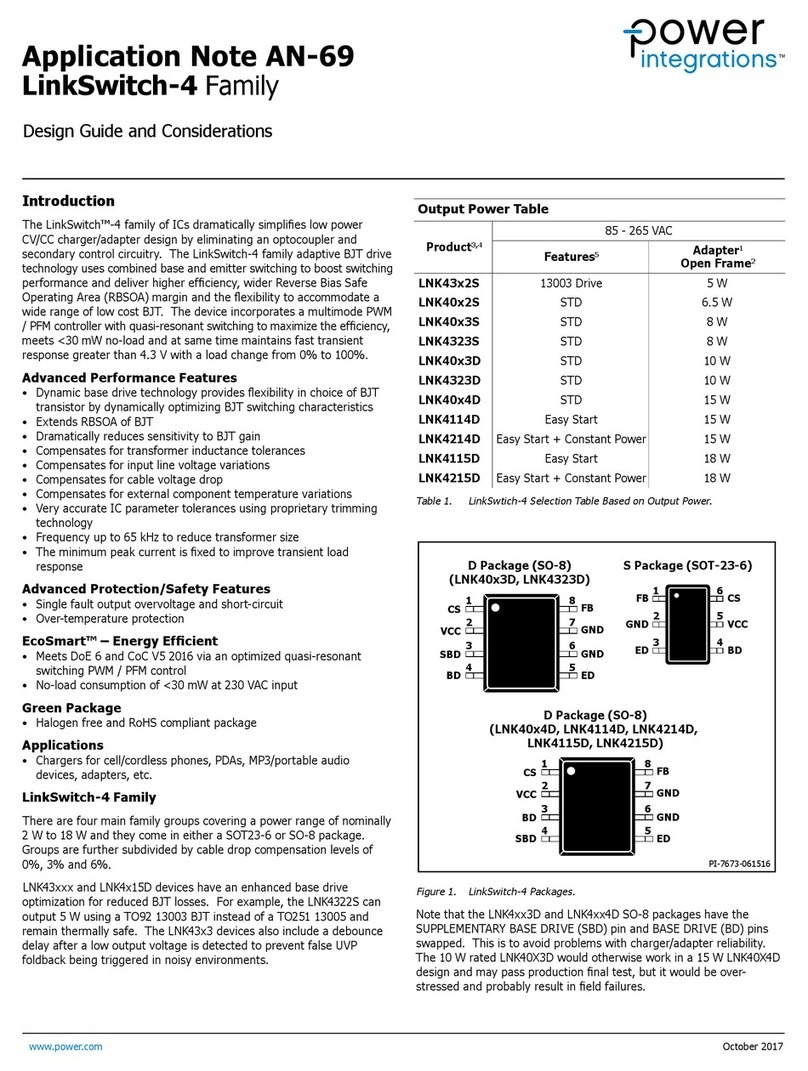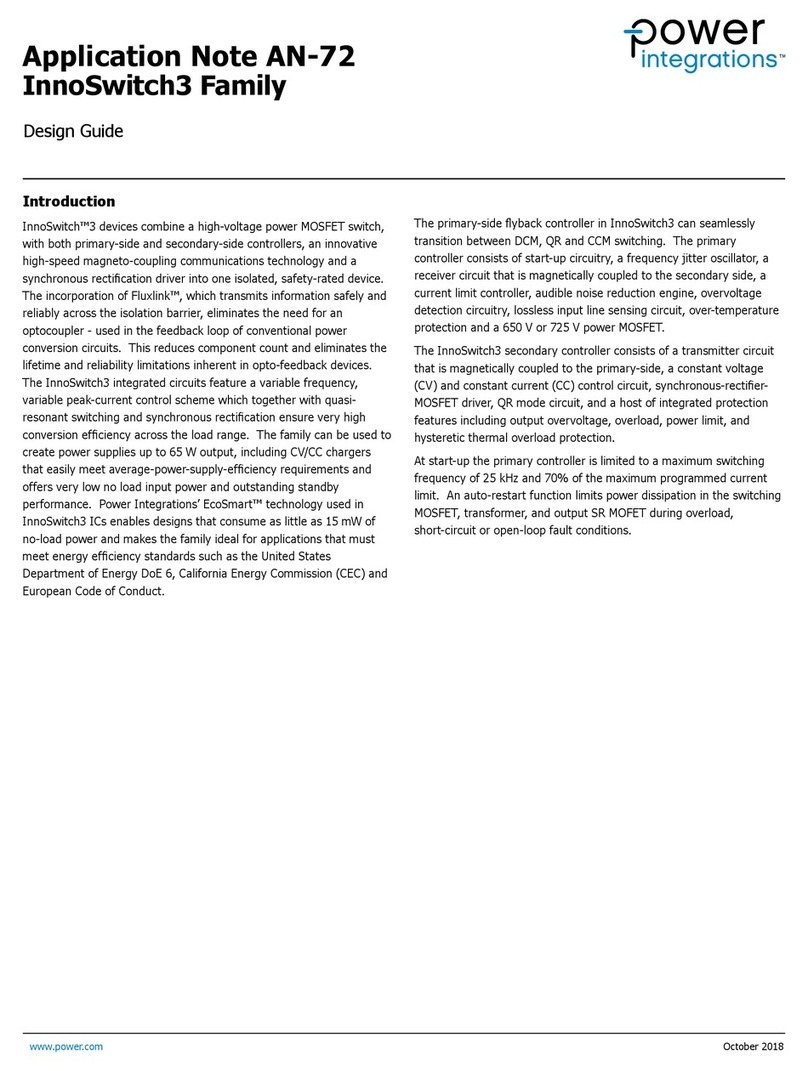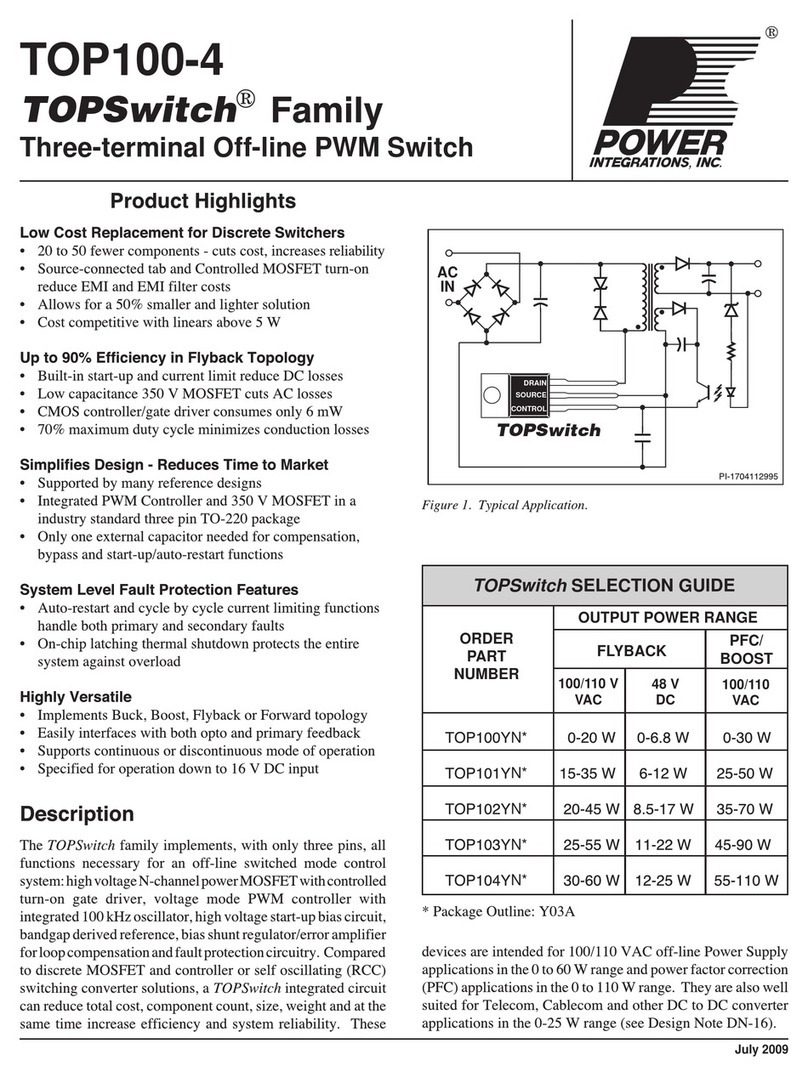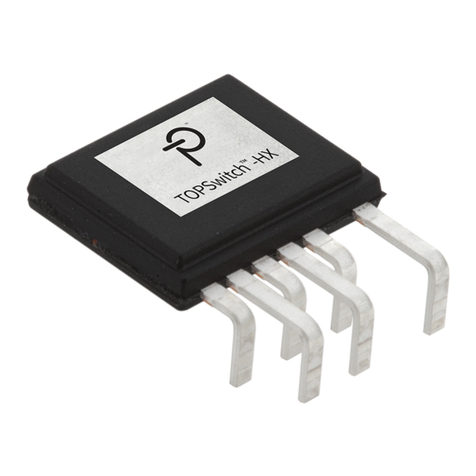
AN-39
B
7/06
6
Figure 6. LinkSwitch-LP Variables Section of LinkSwitch-LP Design Spreadsheet.
performance and not the peak drain voltage that limits the use
of Clampless designs to < 2 W. However if a bias winding is
added which uses a slow diode (1N400x series) that peak in
EMI is reduced as the bias acts as a clamp, damping out the
leakage inductance ringing. This extends the power range for
Clampless designs to ≤2.5 W. In addition, the use of a small
Y-Capacitor (100 pF) can be beneficial in containing this problem
and making the EMI performance less variable.
For designs greater than 2.5 W, a Clampless solution is not
recommended.
The guidance above applies to universal input or 230 VAC only
designs. For 100/110 VAC only input designs it may be possible
to use Clampless designs above 2 - 2.5 W but only after verifying
acceptable peak drain voltage and EMI performance.
All the variables described above can be entered in the Enter
Application Variables section of the LinkSwitch-LP design
spreadsheet in the PI Xls design software (see Figure5).
Step 2 – Enter LinkSwitch-LP, VOR, VDS, VD
Select the appropriate LinkSwitch-LP based on the input
voltage range and the corresponding maximum output power
(see Table 4 & 5).
Table 4. Maximum Output Power Capability of LinkSwitch-LP
Devices.
Power delivery from a given device also depends on the
transformer core size selected. Table 5 provides examples of
the output power possible from each device and 3 common
core sizes. These power numbers assume a flux density of
1500 Gauss, and can be increased for higher flux densities,
based on acceptable audible noise.
Reflected Output Voltage, VOR (V)
This parameter is the secondary winding voltage reflected
back to the primary through the turns ratio of the transformer
(during the off time of the LinkSwitch-LP). The default
value is 80 V, however this can be increased up to 120 V to
achieve the maximum power capability from the selected
LinkSwitch-LP device. In general, start with the default value of
80 V, increasing the value when necessary to maintain KP above
its lower limit of 0.9 at the minimum input voltage of 85 VAC.
For Clampless designs, there is less flexibility in selecting the
value of VOR. Increasing VOR directly increases the peak drain
voltage. Therefore for Clampless designs, a value of 80 V should
be used and only increased once the peak drain voltage has been
measured and adequate margin to BVDSS determined.
LinkSwitch-LP On-State DRAIN-to-SOURCE Voltage,
VDS (V)
This parameter is the average on-state voltage developed across
the DRAIN and SOURCE pins of LinkSwitch-LP. By default, if
the gray override cell is left empty, a value of 10 V is assumed.
Use the default value if no better data is available.
Output Diode Forward Voltage Drop, VD (V)
Enter the average forward voltage drop of the (main) output
diode. Use 0.5 V for a Schottky diode or 1 V for a PN diode
if no better data is available. By default, a value of 0.5 V is
assumed.
Calculated Ripple to Peak Current Ratio, KP
KP is a measure of the operating mode and primary current
waveshape of the design. KP < 1 indicates a continuous design
(the lower the KP
, the more continuous the design) and a
KP > 1 indicates a discontinuous design (the higher the KP
, the
more discontinuous the design).
Below a value of 1, indicating continuous conduction mode,
KP is the ratio of ripple to peak primary current (KRP). Above
a value of 1, indicating discontinuous conduction mode, KP is
the ratio of primary MOSFET off time to the secondary diode
conduction time (KDP). The value of KP should be in the range
of 0.9 < KP < 6 and guidance is given in the comments cell if
the value is outside this range.
Maximum Power (W)
Device Universal Input 230 VAC
LNK562 1.9 1.9
LNK563 2.5 2.5
LNK564 3 3
ENTER LinkSwitch-LP VARIABLES
LinkSwitch-LP LNK564 LinkSwitch-LP device
Chosen Device LNK564
ILIMITMIN 0.124 Amps
ILIMITMAX 0.146 Amps Maximum Current Limit
fSmin93000 Hertz Minimum Device Switching Frequency
I^2fMIN 1665 A^2Hz I^2f Minimum value (product of current limit squared and frequency is trimmed for tighter tolerance)
I^2fTYP 1850 A^2Hz I^2f typical value (product of current limit squared and frequency is trimmed for tighter tolerance)
VOR 80 Volts Reflected Output Voltage
VDS 10 Volts LinkSwitch-LP on-state Drain to Source Voltage
VD 0.5 Volts Output Winding Diode Forward Voltage Drop
KP 1.53 Ripple to Peak Current Ratio (0.9<KRP<1.0 : 1.0<KDP<6.0)
